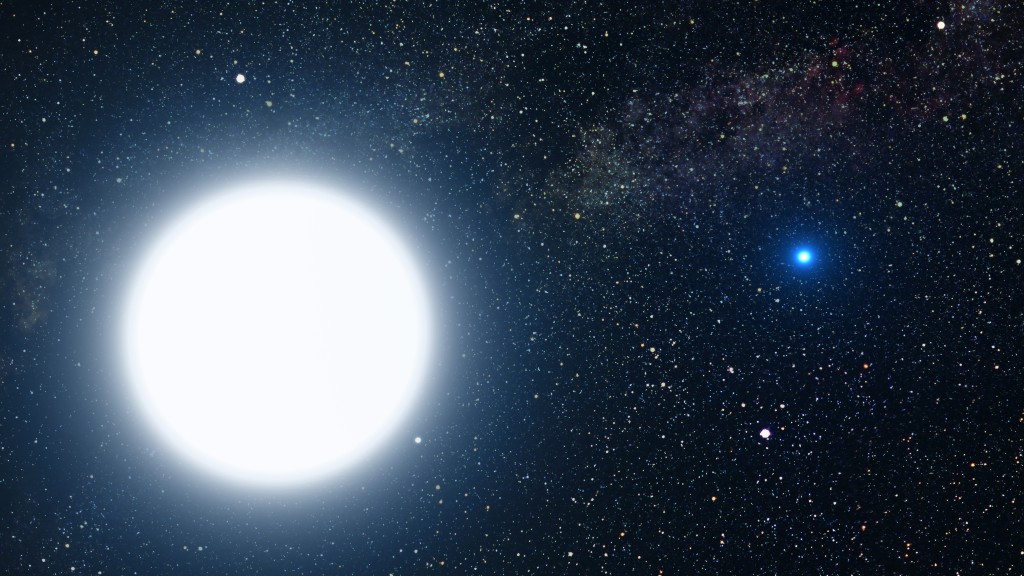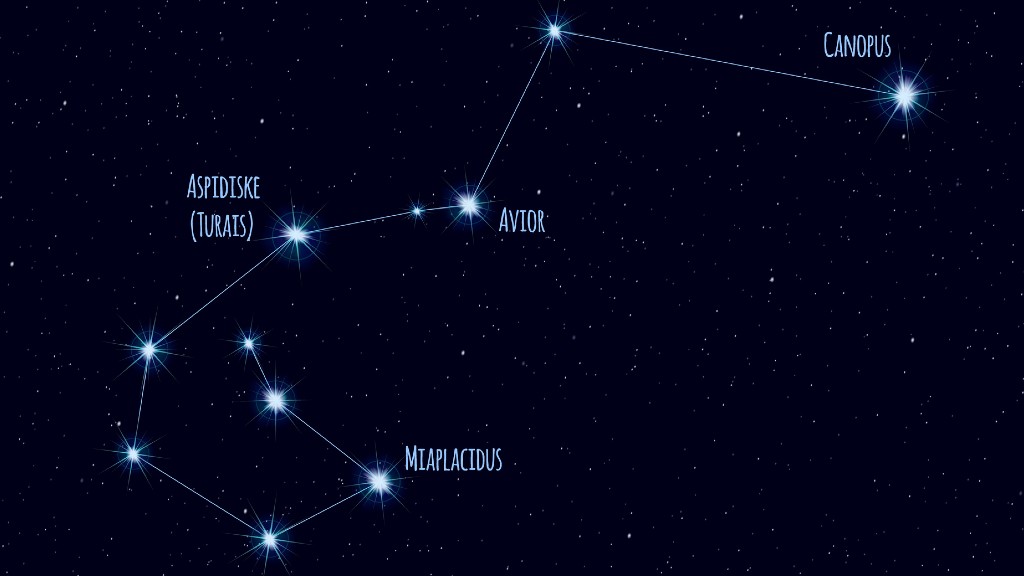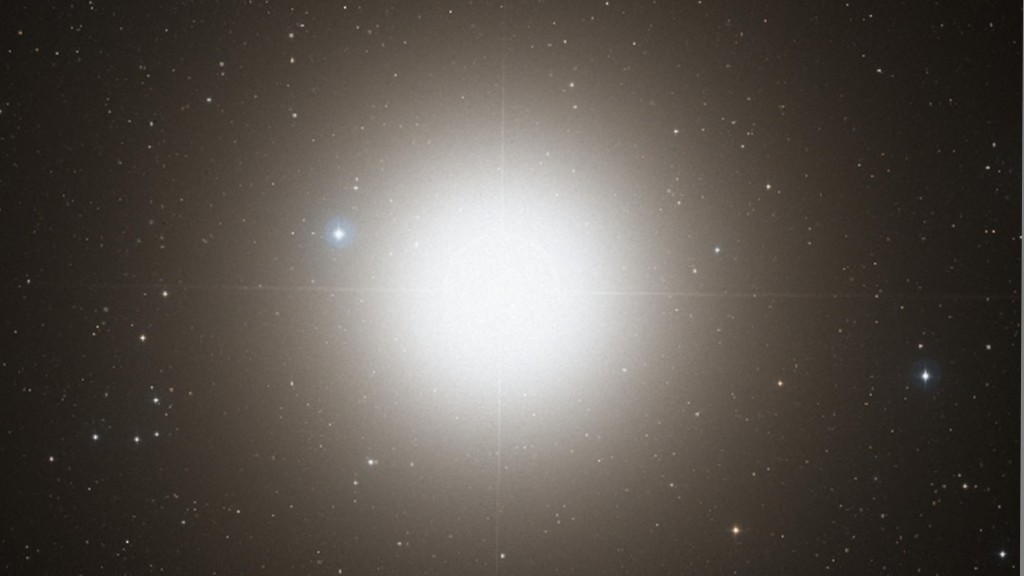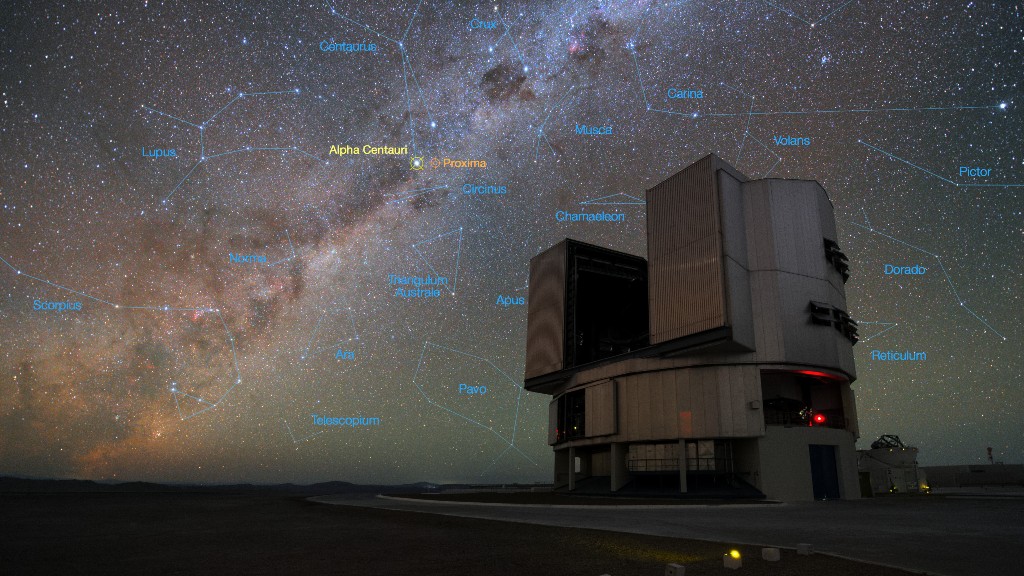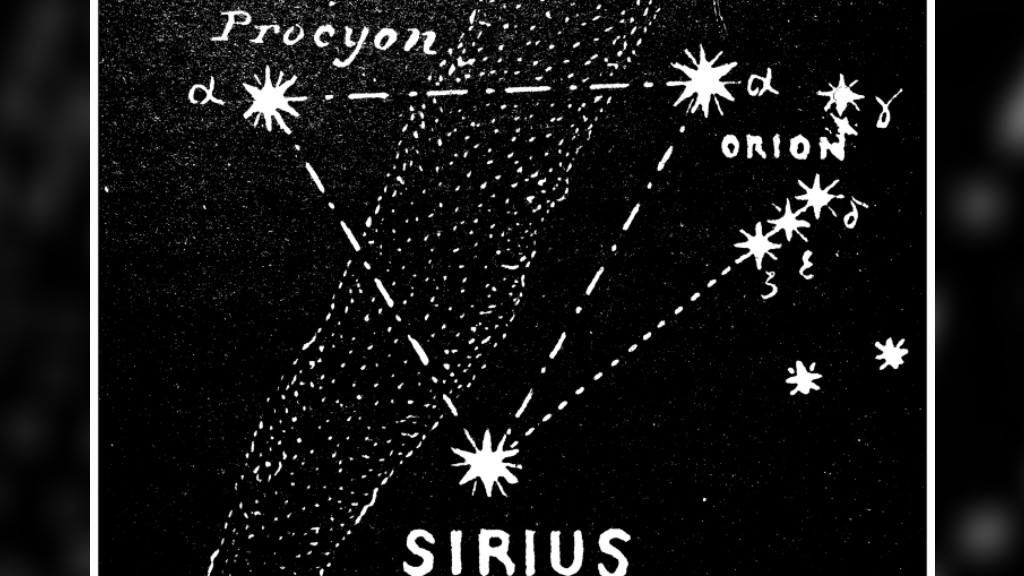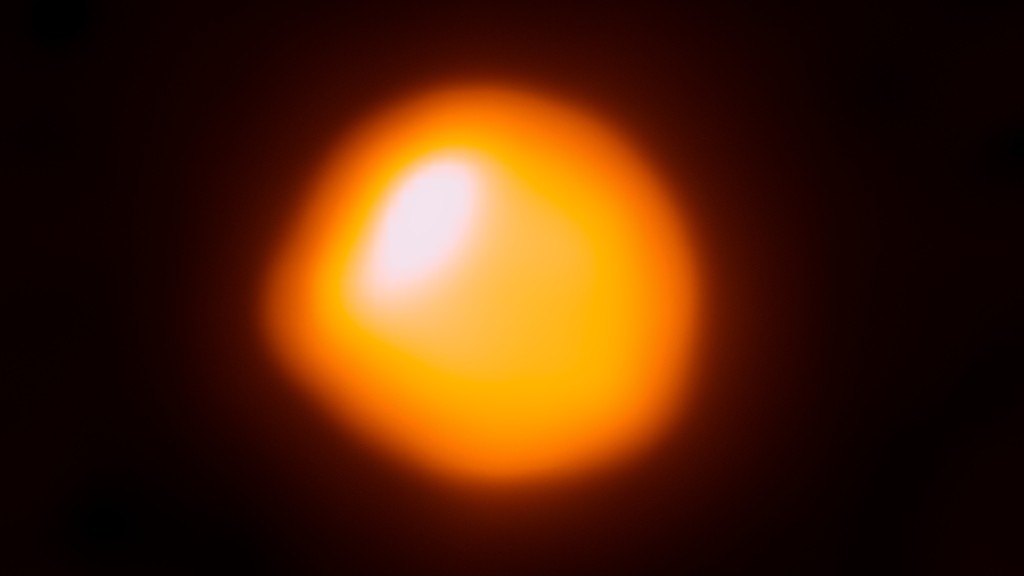The brightest stars in the sky: A guide
The night sky can be a wondrous place filled with stars, but there are some brilliant celestial lights that shine brighter than others.

Brightest stars in the sky: TL;DR
Stars are different sizes and different distances from Earth, so some of them appear brighter than others. The closer a star is to Earth, the brighter it looks. This is most obvious when looking at the nearest star, the sun. The brightness of stars is ranked as "magnitude," which is lowest for the brightest stars and higher for dimmer stars. The ten brightest stars are Sirius, Canopus, Arcturus, Vega, Capella, Rigel, Procyon, Betelgeuse and Altair.
In busy cities, you may only be able to see the brightest stars against light pollution, even on a clear night.
On the other hand, in a really dark location, you may see thousands of stars glittering above you. But even then, some stars will be noticeably brighter than others, and the most luminous ones will be the same select few that city-dwellers see.
These brightest stars have been a familiar sight to humans since ancient times, and we'll look at a selection of them here.
Related: What you can see tonight in the night sky [maps]
There are several reasons why some stars look brighter than others. Perhaps the most obvious is that they're all located at different distances from us. It's no surprise the nearer stars tend to look brighter than ones that are further away. In fact, our closest star — by a long way — is the sun, and when it's visible in the sky it shines so brightly that we can't see the other stars at all.
A second reason for differences in brightness is that some stars are larger than others. Our own sun is in the prime of its life — called the "main sequence" of stellar evolution — but stars that are further advanced in their life cycles can grow to giant proportions. Not surprisingly, a giant star will be much brighter than a main sequence star seen at the same distance.
Breaking space news, the latest updates on rocket launches, skywatching events and more!
The brightness of stars is usually expressed in terms of a "magnitude" value, and — confusingly — this number actually gets bigger for fainter stars. The system originated in the ancient world when people called the very brightest stars "first magnitude", the next brightest "second magnitude" and so on. By the 19th century astronomers needed a more precise scale, so they defined magnitude 2 as 2.5 times fainter than magnitude 1, magnitude 3 as 2.5 times fainter than that, and so on. This allowed the system to be extended to the fractional and negative numbers that we see today.
Classification of stars
There's one other key factor that makes some stars brighter than others, and that's their temperature. Hot stars tend to produce more light than cooler ones. We can get a rough idea of a star's temperature based on its color. Blue stars are the hottest, followed by white, yellow and orange, and then finally red stars are the coolest.
To put this sequence on a more scientific footing, astronomers refer to the "spectral type" of a star, designated by a letter followed by a digit between 0 and 9. The letters, from the blue end to the red end, run O, B, A, F, G, K, M, and then the suffixed digits subdivide these into ten smaller steps. Our own sun, for example, is spectral type G2.
Sirius
Magnitude: -1.46
Type: Main sequence, A0
Constellation: Canis Major
Sirius is the brightest star in the night sky, and sometimes the brightest object of all. The Moon and the planets Jupiter, Venus and Mars — and occasionally Mercury — are the only natural objects that are bright enough to outshine it when they're above the horizon. And the International Space Station, during the brief times that it whizzes by overhead, can sometimes appear brighter too.
Strictly speaking, Sirius is actually a binary system, but the smaller of its two stars is much too dim to be seen with the naked eye. Called Sirius B, this faint little star is actually a white dwarf, in the final stage of stellar evolution. Requiring a powerful telescope to see it, it wasn't discovered until 1862 — and even then astronomers weren't able to estimate its mass until it was observed by the Hubble Space Telescope in 2005. That mass turns out to be just slightly less than that of our own sun, all crammed into a volume similar to the size of the Earth.
It's the larger of the two stars, Sirius A, that makes it such a prominent sight in our skies. Some 10,000 times more luminous than its diminutive companion, this is a bright blue-white star around twice as massive as our own sun. Combined with a distance of just 8.7 light-years, that's why it outshines all the other stars in the night sky. It was a familiar sight to the ancients, who knew it by various different names in different cultures. The one that's come down to us, Sirius, simply means "glowing" — which couldn't be more appropriate.
How to see it
Sirius is very easy to spot during the winter months in the northern hemisphere, due to its brightness. You can see it in the southern part of the sky, to the left of the prominent constellation of Orion. If you imagine projecting the stars that make up Orion's belt out to about eight times the belt's width, that will take you to the vicinity of a very bright star — and that's Sirius.
Canopus
Magnitude: -0.74
Type: Giant, A9
Constellation: Carina
You've probably heard of Sirius, but the second-brightest star, Canopus, may be much less familiar — particularly for those living in northern latitudes. That's because it's essentially a southern-hemisphere sight, but a very bright one even so.
Given that Canopus has the same spectral type, A0, as Sirius, you might imagine that it's a very similar star, but that's not the case. It's actually a giant star, ten times as massive as our sun, or five times as massive as Sirius A. This gives it a much higher intrinsic luminosity than Sirius, which means — in order to appear slightly less bright in our sky — it has to be much further away. Exactly how far away remained a mystery to astronomers until its distance was measured by ESA's Hipparcos satellite in the 1990s. It turned out to be 313 light-years, 36 times further away than Sirius.
How to see it
If you're located at a latitude of 37 degrees north or greater — which covers most of Europe, the United States and Canada — then you're never going to see Canopus because it will always be below the horizon. But if you are far enough south to see it, for example in Florida or Egypt, the best time is February, when it's a bright star near the southern horizon.
Arcturus
Magnitude: -0.05
Type: Red giant, K1
Constellation: Boötes
Arcturus is cooler than the sun, in spectral class K rather than G, and has a mass that's only about one and a half times as great. Yet it puts out far more energy, with an intrinsic luminosity 113 times greater than the sun.
The reason is that it's in the "red giant" stage of its evolution, having swollen up to around 25 times the diameter of the sun (a similar fate awaits the sun itself, in several billion years' time). This, coupled with the fact that Arcturus is only 37 light-years away from us, makes it one of the brightest stars in the night sky.
Unlike Canopus, Arcturus is far enough north that it features prominently in European mythology. It belongs to the constellation Boötes, which is named after a legendary herdsman supposedly in charge of the famous "great bear" constellation of Ursa Major. In fact, the name Arcturus itself can be roughly translated as "guardian of the bear".
How to see it
Arcturus can be seen in the northern night sky the whole year round, and its proximity to the distinctive constellation of Ursa Major makes it easy to find. If you locate the stars making up the handle of the "Big Dipper", and then follow their direction away from the bowl of the dipper, you'll soon come to the star you want: "follow the arc to Arcturus", as the saying goes.
Alpha Centauri
Magnitude: +0.01
Type: Main Sequence, G2
Constellation: Centaurus
Alpha Centauri is the closest star system to the sun, little more than four light-years away. It actually consists of three separate stars, of which the brightest, Alpha Centauri A, is a G-type star similar in size, temperature and luminosity to our own sun. Its close companion, Alpha Centauri B, is a K-type star that's somewhat smaller, cooler and fainter.
The third member of the system, Alpha Centauri C, is a much fainter "red dwarf" star of spectral type M5. It's a fifth of a light-year away from the first two — but it lies in our direction, which makes it the closest single star after the sun. Due to this proximity, it's commonly known by the name of Proxima Centauri. While its dimness makes Proxima a telescope-only object, its parent Alpha Centauri A and B, seen together, make up one of the brightest stars in the sky.
How to see it
Alpha Centauri is the most southerly of all the stars in this list, so it's really a sight for those in the southern hemisphere only. It's particularly prominent in places like Australia, where it's so high in the sky that it can be seen all year round, not too far from the distinctive Southern Cross.
Vega
Magnitude: +0.03
Type: Main sequence, A0
Constellation: Lyra
Vega is a similar star to Sirius, with comparable mass, diameter and spectral type. However, it's around three times further away, at a distance of 25 light-years from us, so it doesn't look quite as bright in the sky. A
couple of things make it a particularly interesting star for astronomers. For one thing, it's relatively young — only about 450 million years old, which is less than a tenth the age of our own sun. So observing it can tell us how stellar systems behave in the relatively early phases of their life. Another notable property of Vega is its rapid rotation rate; it only takes 12.5 hours to spin all the way through 360 degrees. That's so fast that the star is noticeably flattened at the poles, like an under-inflated ball that's been stepped on.
How to see it
Vega, like Arcturus, is an easy star to see if you live in the northern hemisphere. The best time of year is the summer, and is one of the three bright stars — the other two being Altair and Deneb — that make up the so-called "summer triangle". On clear summer evenings, you can see it almost overhead.
Capella
Magnitude: +0.08
Type: Giant, G3
Constellation: Auriga
Capella has been known since ancient times, when — for reasons that are now obscure — it became associated with a little goat. Its formal name comes from the Latin word for a young female goat, and in English-speaking countries, it's often known colloquially simply as "the goat star". When that name originated, long before the day of telescopes, it could just be seen as a bright, yellowish dot in the sky, so it was assumed to be a single star. Now, however, we know the situation is more complicated than that.
Capella actually consists of four stars, arranged in two pairs. The two brightest stars are similar in spectral type to the sun, but they're about ten times as big, while the other two are much smaller and dimmer red dwarfs. The whole system lies about 43 light-years away.
How to see it
In the northern hemisphere, Capella is a prominent sight on Winter evenings, though it can also be seen at other times of the year. In color and brightness, it looks a little like the planet Mars but is located in the northern part of the sky where Mars would never actually be seen. If you can spot the constellation Auriga, then Capella is the brightest star in it.
Rigel
Magnitude: +0.13
Type: Blue supergiant, B8
Constellation: Orion
Of all the stars in this list, Rigel is the furthest away from us, at 863 light-years. But it's still the 7th brightest star in the night sky because its intrinsic luminosity is fantastically high — around 10,000 times that of our own sun. Technically, it's a "blue supergiant", which ticks all the boxes — blue meaning that it's very hot, and supergiant meaning that it's very big, almost 80 times the diameter of the sun. Surprisingly, given its enormous size, Rigel is actually part of a multiple system. It has three smaller companions, dubbed Rigel Ba, Bb and C, although they're all too faint to see without a telescope.
How to see it
Rigel belongs to one of the most easily recognized constellations in the sky, Orion. It's a familiar sight in the northern hemisphere, where it dominates the southern sky on clear winter evenings. If you think of the constellation as a stick figure of a human, then Rigel (from an Arabic word meaning "leg") is the bright star marking the figure's right leg.
Procyon
Magnitude: +0.34
Type: Main sequence, F5
Constellation: Canis Minor
The brightest star in the night sky, Sirius, is often referred to as the "dog star" as it's located in the constellation of Canis Major or the "greater dog". But there's another, somewhat fainter but still very bright star, in the "lesser dog" constellation of Canis Minor that rises in the sky shortly before Sirius. It's called Procyon, from a Greek phrase meaning "before the dog". Procyon resembles Sirius in having a similar mass — albeit a slightly cooler temperature — and a small, faint companion in the form of a white dwarf star. At around 11.5 light-years, it's a little further away than Sirius.
How to see it
The best time to see Procyon, for observers in the northern hemisphere, is in the evening during the winter or early spring months. At these times Procyon forms the prominent "winter triangle" in the southern sky, along with two other stars in this list, Sirius and Betelgeuse.
Betelgeuse
Magnitude: +0.5
Type: Red supergiant, M1
Constellation: Orion
Betelgeuse is in the same constellation, Orion, as Rigel, and it's comparable to it in terms of mass — around 20 times that of our own sun. Yet the two differ in where they lie in the stellar life cycle. Rigel is a young, blue supergiant, while Betelgeuse is an old, red supergiant. This means it's cooler than Rigel, but still very big and bright — around 760 times the diameter of the sun and more than 100,000 times its luminosity. So, even at a distance of 550 light-years, it's still one of the brightest stars in the sky.
Betelgeuse is one of the most talked-about of all stars because astronomers believe it's close to the most dramatic stage of its evolution when it will blow itself apart in a supernova explosion. But don't get too excited — close, in astronomical terms, simply means "within the next 100,000 years".
How to see it
If you've already found Rigel, then locating Betelgeuse is going to be easy. If Rigel is the right leg of the figure of Orion, then Betelgeuse is his left shoulder. It's almost as bright as Rigel and noticeably red in colour, so you can't miss it.
Altair
Magnitude: 0.76
Type: Main sequence, A7
Constellation: Aquila
Altair lies in the "summer triangle" along with Vega, and it's not too different from that star. Altair is slightly cooler and smaller than Vega — but it's also slightly closer to us, so not much lower in apparent brightness. It exceeds Vega in one respect, however, in that it spins on its axis even more rapidly, completing a rotation in an even shorter time than the 12.5 hours that Vega takes. A 2019 study estimated the rotation period at less than 8 hours, resulting in a flattening of Altair's shape by around 20 percent.
How to see it
As already mentioned, Altair is one of the three bright stars making up the "summer triangle", which is easy to find on summer evenings in the northern hemisphere after sunset. At 10 or 11 pm in June or July, two of the triangle's stars, Vega and Deneb, appear to be almost overhead, while the third is some way down towards the southern horizon — and that's Altair.
How to find stars
1. Use technology
The simplest approach for beginners is to download a star-finding mobile app. Then you can just hold your phone up to the sky and it will tell you what you're looking at. Equally easy is a "go-to" telescope, which will automatically point at whatever star you tell it to.
Our picks for the best stargazing apps may help you with your planning.
2. Use a star chart
An older approach is to use a star chart, which is basically just a map of the sky. But it's trickier to read than an ordinary map, because the portion of the sky that's visible changes from month to month. And because you're looking upwards, east is on the left and west on the right.
3. Star-hopping
This method can be the most fun of all. You start by identifying a few of the brightest stars and noting the patterns they make. Then, based either on a star chart or instructions you've read, you use those patterns as a guide to finding the particular star you're looking for.
If you're looking for a telescope or binoculars to observe the brightsts stars in the sky our guides for the best binoculars deals and the bbrightestst telescope deals now can help. Our best cameras for astrophotography and best lenses for astrophotography can also help you prepare to capture the next skywatching sight on your own.
Bibliography
"How to Find Good Places to Stargaze". NASA (2021).
"Why Is Our Sun So Big and Bright?". National Science Teaching Association (2022).
"Types of Stars". AstroBackyard (2022).
"The colour of stars". Sky at Night magazine (2011).
"A note on the spectral atlas and spectral classification". Harvard (2022).
"The Stellar Magnitude System". Sky and Telescope (2006).
"A realistic two-dimensional model of Altair". Cornell University (2019).

Andrew May holds a Ph.D. in astrophysics from Manchester University, U.K. For 30 years, he worked in the academic, government and private sectors, before becoming a science writer where he has written for Fortean Times, How It Works, All About Space, BBC Science Focus, among others. He has also written a selection of books including Cosmic Impact and Astrobiology: The Search for Life Elsewhere in the Universe, published by Icon Books.
